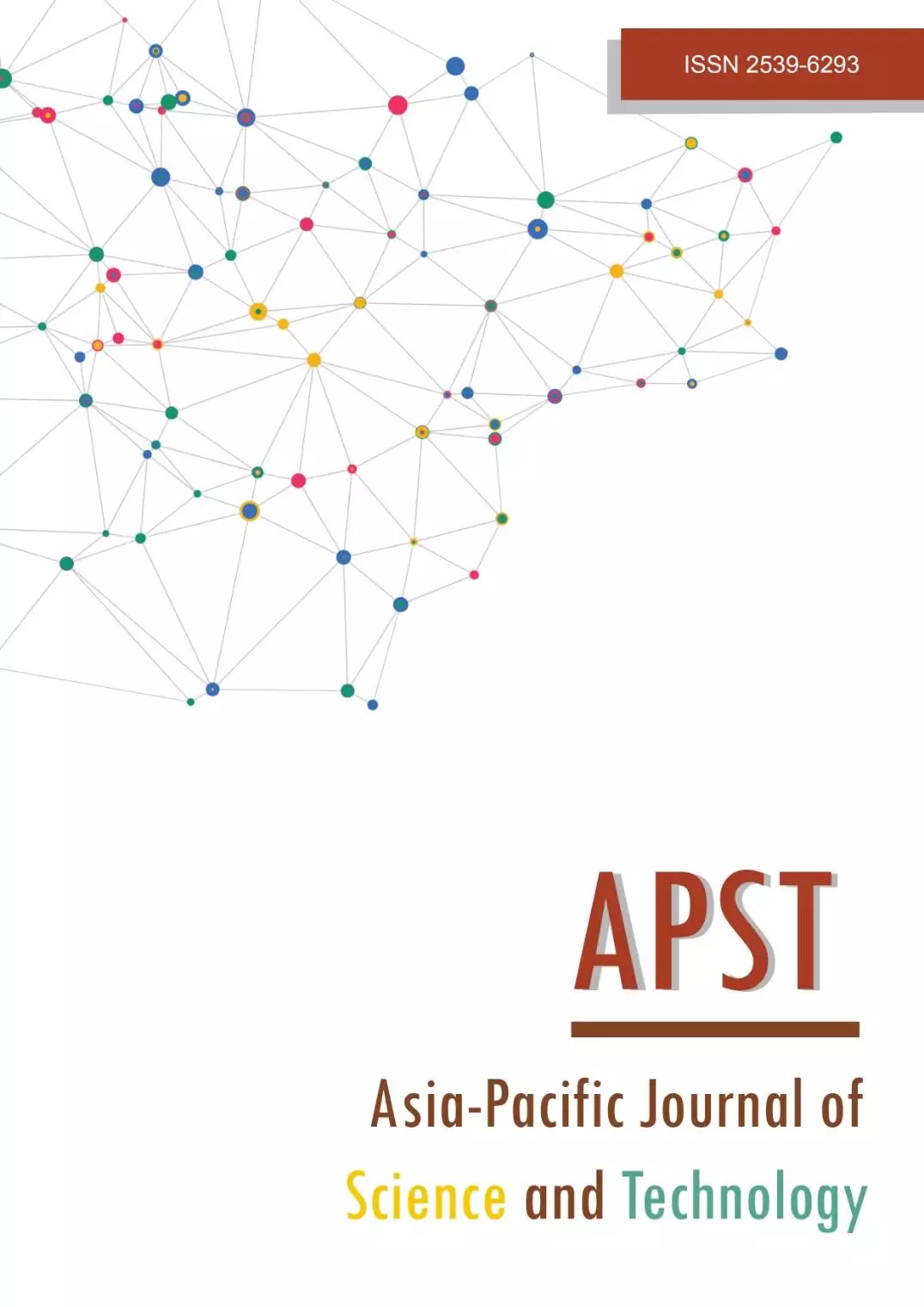National yield reference for sugarcane management: Thailand case study
Main Article Content
Abstract
In this study, a tool is proposed to assist small-scale sugarcane farmers in Thailand in justifying their field management practices. The tool is a master chart derived from the relationship between annual average rainfall and national sugarcane yield and consists of three curves: the mean, the upper bound, and the lower bound. The chart allows farmers to assess the condition of their fields by plotting the coordinates of annual rainfall and yield to observe the position in relation to the three curves. The ratio of actual yield to the upper bound yield also helps in the justification process. This proposed method offers an alternative to the traditional yield gap technique, which is difficult to obtain, unreliable, and not standardized for the whole country. The relationship equation of the annual rainfall and detrended yield has been formulated from the hypothesis that their derivative follows an exponential decay. After obtaining the trend (mean), the upper and lower bounds can be derived for the 95th and 5th percentiles, respectively. The master chart, along with the yield-ratio concept, has been tested against three field observations and four field experiments.
Article Details

This work is licensed under a Creative Commons Attribution-NonCommercial-NoDerivatives 4.0 International License.
References
Sadras VO, Cassman KGG, Grassini P, Hall AJ, Bastiaanssen WGM, Laborte AG, et al. Yield gap analysis of field crops, Methods and case studies. Vol. 41, FAO Water Reports. 2015.
Rattalino Edreira JI, Andrade JF, Cassman KG, van Ittersum MK, van Loon MP, Grassini P. Spatial frameworks for robust estimation of yield gaps. Nat Food. 2021;2:773–779.
Hongthong P, Patanothai A. Variations in sugarcane yield among farmers’ fields and their causal factors in Northeast Thailand. Int J Plant Prod. 2017;11(4):533–548.
Lobell DB, Cassman KG, Field CB. Crop yield gaps: Their importance, magnitudes, and causes. Annu Rev Environ Resour. 2009;34:179–204.
Tanguy M, Eastman M, Magee E, Barker LJ, Chitson T, Ekkawatpanit C, et al. Indicator-to-impact links to help improve agricultural drought preparedness in Thailand. Nat Hazards Earth Syst Sci. 2023;23(7):2419–2441.
Mehrabi Z, Delzeit R, Ignaciuk A, Levers C, Braich G, Bajaj K, et al. Research priorities for global food security under extreme events. One Earth. 2022;5(7):756–766.
Khumla N, Sakuanrungsirikul S, Punpee P, Hamarn T, Chaisan T, Soulard L, et al. Sugarcane Breeding, Germplasm Development and Supporting Genetics Research in Thailand. Sugar Tech. 2022;24(1):193–209.
Calviño PA, Sadras VO. Interannual variation in soybean yield: interaction among rainfall, soil depth and crop management. F Crop Res. 1999;63(3):237–246.
Hendrawan VSA, Kim W, Komori D. Crop response pattern to several drought timescales and its possible determinants: A global-scale analysis during the last decades. Anthropocene. 2023;43:100389.
Harris I, Osborn TJ, Jones P, Lister D. Version 4 of the CRU TS monthly high-resolution gridded multivariate climate dataset. Sci Data. 2020;7(107):1–18.
Caloiero T. Evaluation of rainfall trends in the South Island of New Zealand through the innovative trend analysis (ITA). Theor Appl Climatol. 2020;139:493–504.
Şen Z. Innovative Trend Analysis Methodology. J Hydrol Eng. 2012;17(9):1042–1046.
Food and Agriculture Organization. Data: Crops and livestock products [Internet]. 2019 [cited 2021 Jun 14]. Available from: https://www.fao.org/faostat/en/#data/QCL
Singta S, Chidthaisong A, Komori D, Surapioith V, Kim W. Estimation of evapotranspiration from sugarcane plantation using eddy covariance method. J Sustain Energy Environ. 2018;9:1–9.
Palachai C, Songsri P, Jongrungklang N. Comparison of yield components of sugarcane varities grown under natural short- and long-term water-logged conditions in Thailand. Sabrao J Breed Genet. 2019;51(1):80–92.
Boodseephum P, Wongtamee A. Evaluation of yield components and yields of high yielding sugarcane varieties in plant cane and first ratoon for clay soil area of Phitsanulok province. Naresuan Phayao J. 2022;15(1):109–121.
Kapetch P, Sansayawichai T, Kirasak K KS. Responses of a Sugarcane (Sacharum offcinarum L.) Cultivar, Khon Kaen 3 to Limited Irrigation Rates. Thai Agric Res J. 2023;28(3):306–316.
Marin FR, Rattalino Edreira JI, Andrade J, Grassini P. On-farm sugarcane yield and yield components as influenced by number of harvests. Field Crops Res. 2019;240:134–142.


